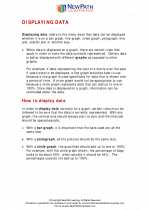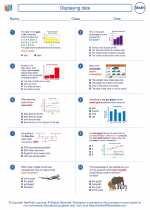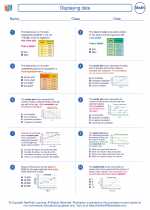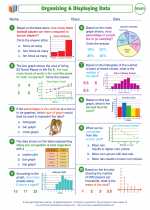What is a Decimal?
A decimal is a way of representing a part of a whole number or a fraction. It is based on the powers of 10, with each place value to the right of the decimal point representing a power of 10 that is a negative exponent. For example, in the number 123.456, the digit 1 is in the hundreds place, the digit 2 is in the tens place, the digit 3 is in the ones place, the digit 4 is in the tenths place, the digit 5 is in the hundredths place, and the digit 6 is in the thousandths place.
Decimal Notation
Decimals are written using a decimal point to separate the whole number part from the fractional part. For example, the number 3.14 represents 3 whole units and 14 hundredths. The digits to the right of the decimal point represent the fractional part of the number.
Comparing Decimals
When comparing decimals, start from the left and compare the digits in each place value. If the digits are the same, move to the next place value. If the digits are different, the larger digit indicates the larger number. For example, when comparing 0.35 and 0.4, start with the tenths place: 3 is less than 4, so 0.35 is less than 0.4.
Adding and Subtracting Decimals
When adding or subtracting decimals, align the decimal points and perform the arithmetic as if the decimals were whole numbers. Then, place the decimal point in the answer directly below the decimal points in the numbers being added or subtracted.
Multiplying and Dividing Decimals
When multiplying decimals, ignore the decimal points and multiply the numbers as if they were whole numbers. Then, count the total number of decimal places in the original numbers and place the decimal point in the answer so that it has the same number of decimal places. When dividing decimals, move the decimal point to the right in both the dividend and divisor until the divisor is a whole number, then perform the division as if it were whole numbers. Finally, place the decimal point in the quotient directly above the decimal point in the dividend.
Rounding Decimals
To round a decimal number, find the place value you want to round to and look at the digit to the right of that place value. If the digit is 5 or greater, round up; if it is less than 5, round down. Then, replace all the digits to the right of the chosen place value with zeros.
Study Guide
- Understand the concept of decimal notation and the place value system.
- Practice comparing decimals and understanding their relative magnitudes.
- Learn the rules for adding, subtracting, multiplying, and dividing decimals.
- Practice rounding decimals to a given place value.
- Apply decimal operations to real-life situations, such as shopping or calculating measurements.
[Decimal] Related Worksheets and Study Guides:
.◂Math Worksheets and Study Guides Eighth Grade. Displaying data

 Worksheet/Answer key
Worksheet/Answer key
 Worksheet/Answer key
Worksheet/Answer key
 Worksheet/Answer key
Worksheet/Answer key
 Worksheet/Answer key
Worksheet/Answer key
